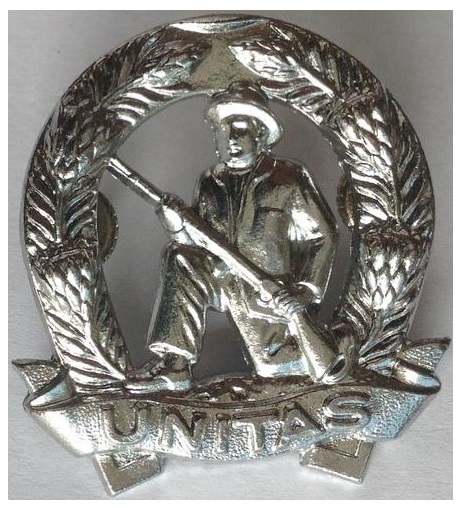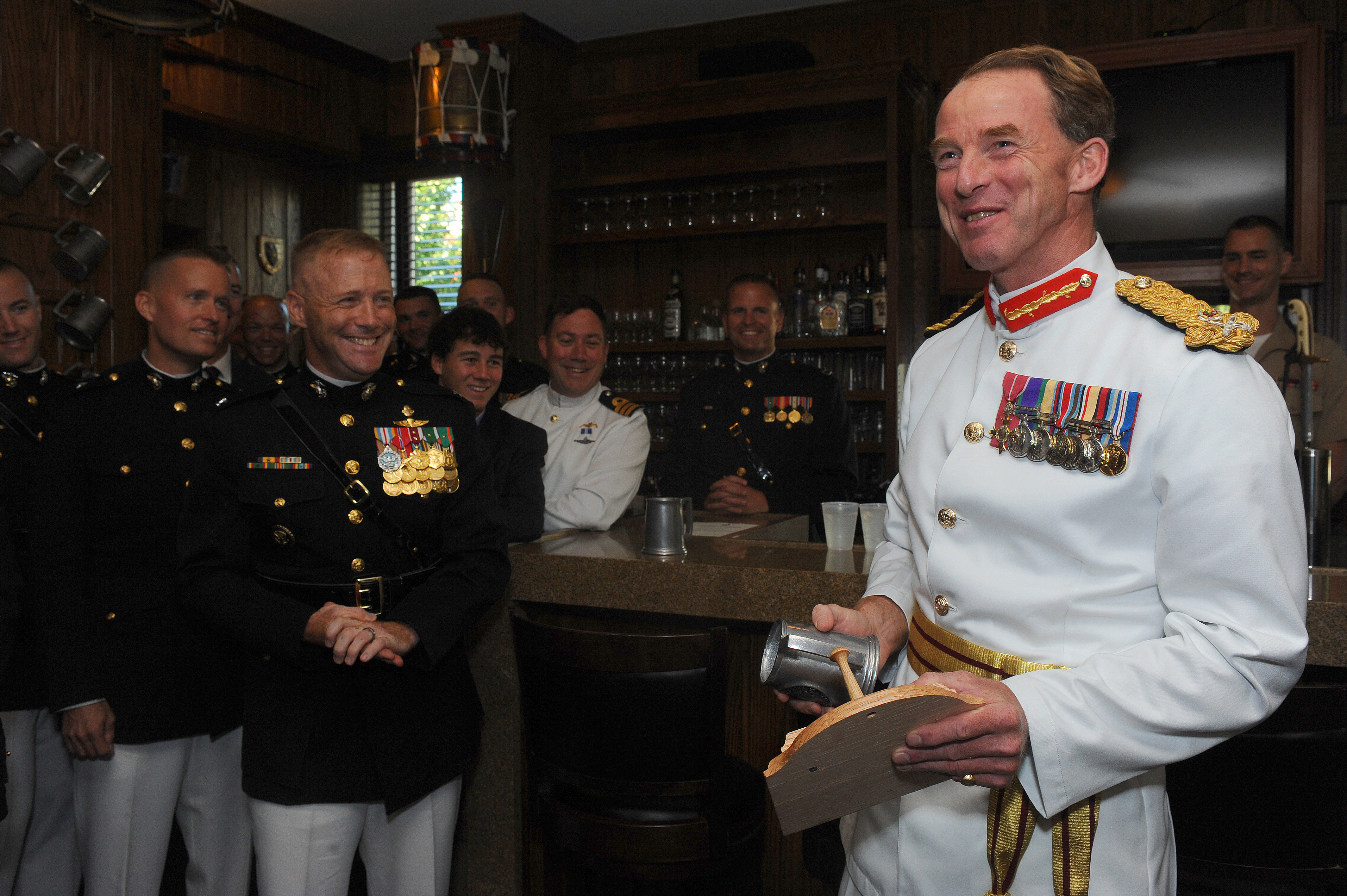|
South African Commando System
The Commando System was a mostly voluntary, part-time force of the South African Army, but in their role as local militia the units were often deployed in support of and under the authority of the South African Police. Mission South Africa's Commando System was responsible for the safeguarding and protection of specific communities (usually rural, but sometimes urban). Commando units were usually referred to as area protection, a system which involved the whole community. The participants in the Commando System did not have military commitments outside of the areas they served and were responsible for the safety and security of their own communities. History Origin The Commando system existed from the 1770s. The early Boer Commando system was a conscriptive service designed to provide a quickly-trained fighting force. Commandos were a product of the First Boer War during which the fiercely independent Boers had no regular army. When danger threatened, all the men in a dist ... [...More Info...] [...Related Items...] OR: [Wikipedia] [Google] [Baidu] |
Light Infantry
Light infantry refers to certain types of lightly equipped infantry throughout history. They have a more mobile or fluid function than other types of infantry, such as heavy infantry or line infantry. Historically, light infantry often fought as scouts, raiders, and skirmishers. These are loose formations that fight ahead of the main army to harass, delay, disrupt supply lines, engage the enemy’s own skirmishing forces, and generally "soften up" an enemy before the main battle. Light infantrymen were also often responsible for screening the main body of a military formation. Post-World War II, the term "light infantry" evolved to include rapid-deployment units (including commandos and airborne units) that emphasize speed and mobility over armor and firepower. Some units or battalions that historically held a skirmishing role have kept their designation "light infantry" for the sake of tradition. History Ancient history The concept of a skirmishing screen is a very ... [...More Info...] [...Related Items...] OR: [Wikipedia] [Google] [Baidu] |
South African Defence Force
The South African Defence Force (SADF) (Afrikaans: ''Suid-Afrikaanse Weermag'') comprised the armed forces of South Africa from 1957 until 1994. Shortly before the state reconstituted itself as a republic in 1961, the former Union Defence Force was officially succeeded by the SADF, which was established by the Defence Act (No. 44) of 1957. The SADF, in turn, was superseded by the South African National Defence Force in 1994. Mission and structure The SADF was organised to perform a dual mission: to counter possible insurgency in all forms, and to maintain a conventional military arm which could defend the republic's borders, making retaliatory strikes as necessary. As the military expanded during the 1970s, the SADF general staff was organised into six sections—finance, intelligence, logistics, operations, personnel, and planning; uniquely, the South African Medical Service (SAMS) was made co-equal with the South African Army, the South African Navy and the South African ... [...More Info...] [...Related Items...] OR: [Wikipedia] [Google] [Baidu] |
Union Defence Force (South Africa)
) , headquarters = Pretoria, Transvaal, South Africa , commander-in-chief = , commander-in-chief_title = Sovereign of South Africa , minister = , minister_title = , commander = , commander_title = Chief of the UDF , age = , conscription = , active = , ranked = , reserve = , deployed = , amount = , percent_GDP = , domestic_suppliers = , foreign_suppliers = , imports = , exports = , history = World War I Rand RebellionWorld War II Berlin BlockadeKorean War , ranks = South African military ranks The Union Defence Force (UDF) ( af, Unie-Verdedigingsmag) comprised the armed forces of South Africa from 1 July 1912, when the Defence Act (No 13 of 1912) took effect, two years after the creation of the Union of South Africa, until 1957 when it was reorganised and renamed the South African Defence ... [...More Info...] [...Related Items...] OR: [Wikipedia] [Google] [Baidu] |
Hoofdkommandant
Commandant-general is a military rank in several countries and is generally equivalent to that of major-general. Argentina Commandant general is the highest rank in the Argentine National Gendarmerie, and is held by the national director of the gendarmerie and his senior deputies. Depending on the appointment, it may be equal to any Argentine army rank from brigade general to the highest Argentine army rank, lieutenant general. Ireland During the Irish Civil War of 1922–23, the Irregulars, or anti-Treaty IRA, applied this term to the leaders of their various brigades throughout the country. The term was acquired from the Boer ranks, through veterans of the Irish Transvaal Brigade. Italy The ''comandante generale'' (commandant general) in Fascist Italy's Blackshirts was the title of their head and was held by Benito Mussolini from 1922 to 1943. The title is now held by the commander of the ''Carabinieri''. Portugal and Brazil Historically, commandant-general ( pt, comandante-g ... [...More Info...] [...Related Items...] OR: [Wikipedia] [Google] [Baidu] |
Commandant-General
Commandant-general is a military rank in several countries and is generally equivalent to that of major-general. Argentina Commandant general is the highest rank in the Argentine National Gendarmerie, and is held by the national director of the gendarmerie and his senior deputies. Depending on the appointment, it may be equal to any Argentine army rank from brigade general to the highest Argentine army rank, lieutenant general. Ireland During the Irish Civil War of 1922–23, the Irregulars, or anti-Treaty IRA, applied this term to the leaders of their various brigades throughout the country. The term was acquired from the Boer ranks, through veterans of the Irish Transvaal Brigade. Italy The ''comandante generale'' (commandant general) in Fascist Italy's Blackshirts was the title of their head and was held by Benito Mussolini from 1922 to 1943. The title is now held by the commander of the ''Carabinieri''. Portugal and Brazil Historically, commandant-general ( pt, comandante- ... [...More Info...] [...Related Items...] OR: [Wikipedia] [Google] [Baidu] |
South African Republic
The South African Republic ( nl, Zuid-Afrikaansche Republiek, abbreviated ZAR; af, Suid-Afrikaanse Republiek), also known as the Transvaal Republic, was an independent Boer Republic in Southern Africa which existed from 1852 to 1902, when it was annexed into the British Empire as a result of the Second Boer War. The ZAR was established as a result of the 1852 Sand River Convention, in which the British government agreed to formally recognise independence of the Boers living north of the Vaal River. Relations between the ZAR and Britain started to deteriorate after the British Cape Colony expanded into the Southern African interior, eventually leading to the outbreak of the First Boer War between the two nations. The Boer victory confirmed the ZAR's independence; however, Anglo-ZAR tensions soon flared up again over various diplomatic issues. In 1899, war again broke out between Britain and the ZAR, which was swiftly occupied by the British military. Many Boer combatan ... [...More Info...] [...Related Items...] OR: [Wikipedia] [Google] [Baidu] |
Citizen
Citizenship is a "relationship between an individual and a state to which the individual owes allegiance and in turn is entitled to its protection". Each state determines the conditions under which it will recognize persons as its citizens, and the conditions under which that status will be withdrawn. Recognition by a state as a citizen generally carries with it recognition of civil, political, and social rights which are not afforded to non-citizens. In general, the basic rights normally regarded as arising from citizenship are the right to a passport, the right to leave and return to the country/ies of citizenship, the right to live in that country, and to work there. Some countries permit their citizens to have multiple citizenships, while others insist on exclusive allegiance. Determining factors A person can be recognized or granted citizenship on a number of bases. Usually, citizenship based on circumstances of birth is automatic, but an application may be required. ... [...More Info...] [...Related Items...] OR: [Wikipedia] [Google] [Baidu] |
Veldkornet
A field cornet () is a term formerly used in South Africa for either a local government official or a military officer. The office had its origins in the position of ''veldwachtmeester'' in the Dutch Cape colony, and was regarded as being equivalent to a sergeant. The British administration enhanced its importance with the term field cornet, making it equivalent to an officer's rank. The term was used for a civilian official in a local government district ('' drostdy'') of the Cape Colony, acting as and invested with the authority of a military officer and empowered to act as a magistrate. The field cornet was subject to the landdrost of the district and acted as his representative. As such, a field cornet performed important functions in administrative, judicial and police matters. In addition, in peacetime the field cornet was the head of the militia, was responsible for maintaining law and order in his area, and was tasked with supervising the handover of postal items on arriva ... [...More Info...] [...Related Items...] OR: [Wikipedia] [Google] [Baidu] |
Bloemfontein
Bloemfontein, ( ; , "fountain of flowers") also known as Bloem, is one of South Africa's three capital cities and the capital of the Free State province. It serves as the country's judicial capital, along with legislative capital Cape Town and administrative capital Pretoria. Bloemfontein is the seventh-largest city in South Africa. Situated at an elevation of above sea level, the city is home to approximately 520,000 residents and forms part of the Mangaung Metropolitan Municipality which has a population of 747,431. It was one of the host cities for the 2010 FIFA World Cup. The city of Bloemfontein hosts the Supreme Court of Appeal of South Africa, the Franklin Game Reserve, Naval Hill, the Maselspoort Resort and the Sand du Plessis Theatre. The city hosts numerous museums, including the National Women's Monument, the Anglo-Boer War Museum, the National Museum, and the Oliewenhuis Art Museum. Bloemfontein also hosts the first digital planetarium in the southern ... [...More Info...] [...Related Items...] OR: [Wikipedia] [Google] [Baidu] |
Second Boer War
The Second Boer War ( af, Tweede Vryheidsoorlog, , 11 October 189931 May 1902), also known as the Boer War, the Anglo–Boer War, or the South African War, was a conflict fought between the British Empire and the two Boer Republics (the South African Republic and the Orange Free State) over the Empire's influence in Southern Africa from 1899 to 1902. Following the discovery of gold deposits in the Boer republics, there was a large influx of "foreigners", mostly British from the Cape Colony. They were not permitted to have a vote, and were regarded as "unwelcome visitors", invaders, and they protested to the British authorities in the Cape. Negotiations failed and, in the opening stages of the war, the Boers launched successful attacks against British outposts before being pushed back by imperial reinforcements. Though the British swiftly occupied the Boer republics, numerous Boers refused to accept defeat and engaged in guerrilla warfare. Eventually, British scorche ... [...More Info...] [...Related Items...] OR: [Wikipedia] [Google] [Baidu] |
Light Cavalry
Light cavalry comprised lightly armed and armored cavalry troops mounted on fast horses, as opposed to heavy cavalry, where the mounted riders (and sometimes the warhorses) were heavily armored. The purpose of light cavalry was primarily raiding, reconnaissance, screening, skirmishing, patrolling and tactical communications. Prior to the early 17th century they were usually armed with swords, spears, javelins, or bows, and later on with sabres, pistols, shotguns, or carbines. Light cavalry was used infrequently by Ancient Greeks (who used hippeis such as prodromoi or sarissophoroi) and Ancient Romans (who used auxiliaries such as equites Numidarum or equites Maurorum), but were more common among the armies of Eastern Europe, North Africa, West Asia, Central Asia and East Asia. The Arabs, Cossacks, Hungarians, Huns, Kalmycks, Mongols, Turks, Parthians, and Persians were all adept light cavalrymen and horse archers. With the decline of feudalism and knighthoo ... [...More Info...] [...Related Items...] OR: [Wikipedia] [Google] [Baidu] |



.jpg)


_31.jpg)